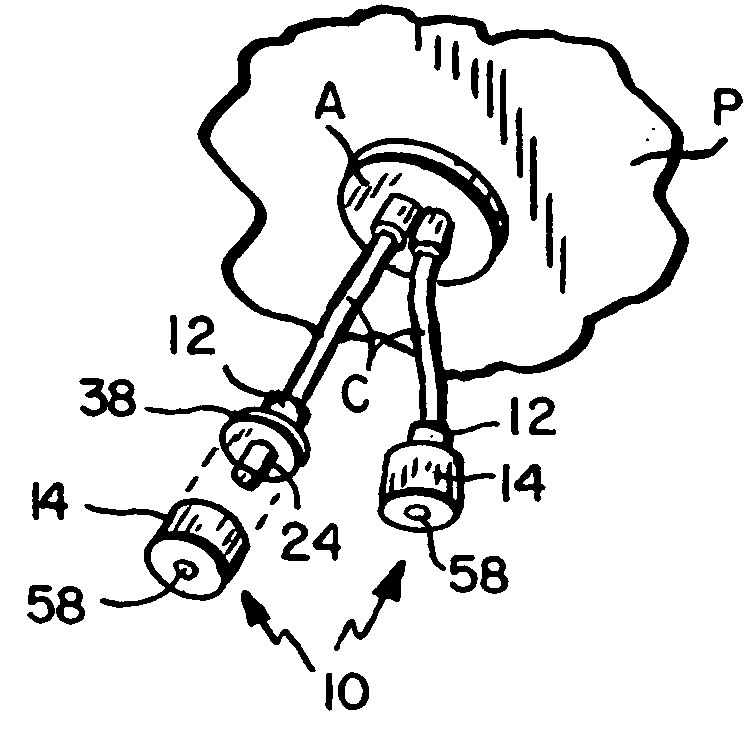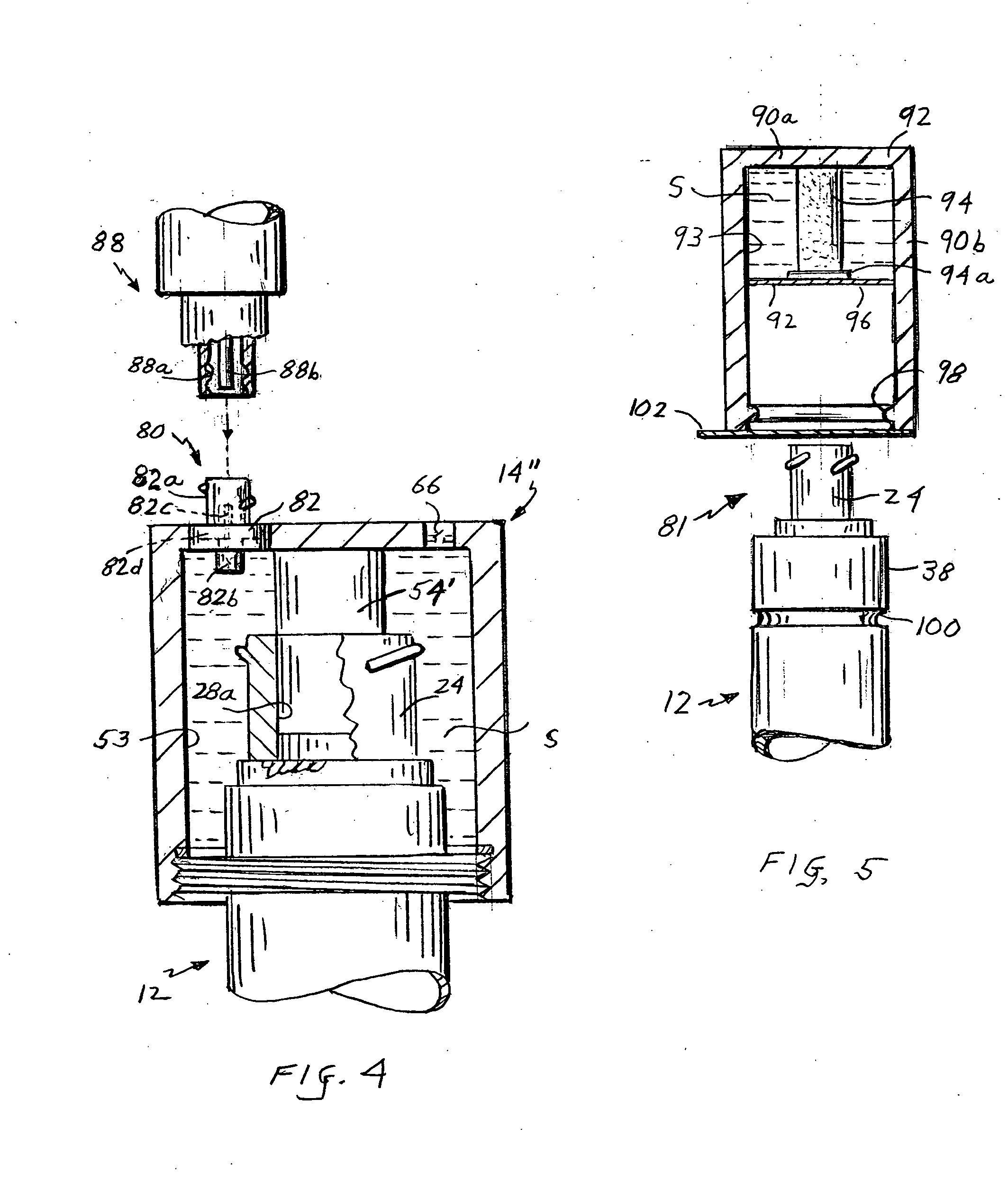Sanitized tubing termination method and assembly
a technology of sanitized tubing and termination method, which is applied in disinfection, other medical devices, catheters, etc., can solve the problems of biological contamination still present on the connector, biological contaminants may be entrained in the fluid flow to the patient, and the device category is particularly susceptible to biological contamination, etc., to achieve the effect of easy and inexpensive quantity production
- Summary
- Abstract
- Description
- Claims
- Application Information
AI Technical Summary
Benefits of technology
Problems solved by technology
Method used
Image
Examples
Embodiment Construction
[0038] Refer now to FIG. 1 which illustrates a skin area of a patient P where catheters C are implanted in the patient by way of a transcutaneous access device A such as the one shown in my above-identified patent. Each catheter C is terminated by a termination assembly shown generally at 10. Each assembly includes a connector 12 and an end cap 14 which may be releasably secured to the connector, the end caps being shown in both unassembled and assembled positions.
[0039] In a typical application, the catheters C may be connected to a dialysis machine in order to treat a patient with chronic kidney failure. In that event, with the end caps 14 removed from the respective connectors 12, those connectors are coupled to the mating connectors (not shown) at the ends of tubing leading to and from the dialysis machine. When the connectors 12 are decoupled from their mates, they may be protectively enclosed by end caps 14 as will be described.
[0040] Referring now to FIGS. 2A and 2B, each c...
PUM
 Login to View More
Login to View More Abstract
Description
Claims
Application Information
 Login to View More
Login to View More - R&D
- Intellectual Property
- Life Sciences
- Materials
- Tech Scout
- Unparalleled Data Quality
- Higher Quality Content
- 60% Fewer Hallucinations
Browse by: Latest US Patents, China's latest patents, Technical Efficacy Thesaurus, Application Domain, Technology Topic, Popular Technical Reports.
© 2025 PatSnap. All rights reserved.Legal|Privacy policy|Modern Slavery Act Transparency Statement|Sitemap|About US| Contact US: help@patsnap.com



